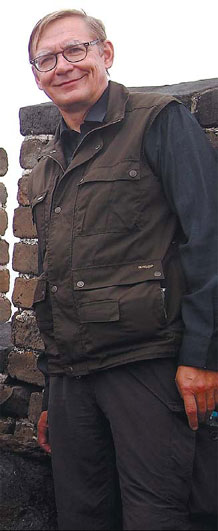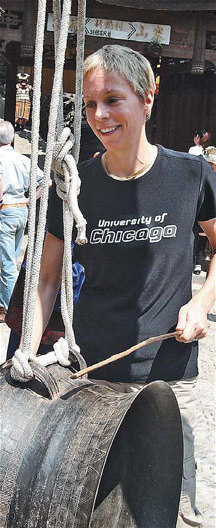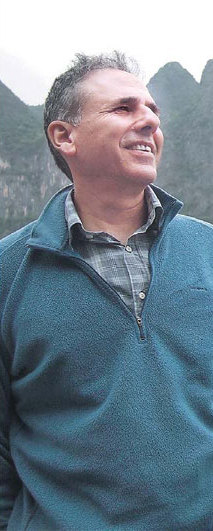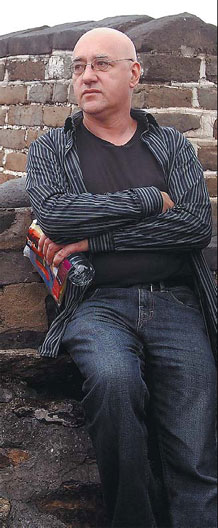The grid structure of cities, the materials used for roads, the design of traffic lights, the modern architectural elements, all have close parallels in the US. But there is one thing, totally ubiquitous, that does remind him of the difference - and that is written Chinese. "A Westerner is immediately struck both by its aesthetic beauty and its total incomprehensibility. The piece I wrote, Quanta, starts from this observation."
Augusta Read Thomas was fascinated by the drums, legends and mythologies of the Miao ethnic group in Guizhou.
"Drums reflect many of the unique social and historical patterns that evolve throughout a culture. The rich array of artistic expressions of Chinese drum culture - sacrifice, worshiping and farming - give full expression to the vitality of the Chinese nation," she says.
China has hundreds of so-called cultural communication events and projects every year. But what is real communication? Meeting, getting to know each other, making friends and even clashing.
These five musical works are a response to China and a medium for Chinese to rethink their diverse culture.

Britain's Robin Holloway depicts the unchanging beauty of the countryside with in China.

Finland's Kalevi Aho reflects on his visit to Guizhou with Gejia-Chinese Images for Orchestra.

American Augusta Read Thomas' Harvest Drum celebrates an ethnic group in Guizhou.

American Michael Gordon's Beijing Harmony is inspired by the Temple of Heaven's Echo Wall.

American Sebastian Currier's Quanta interprets Chinese characters.
Contact the writer at chenjie@chinadaily.com.cn.
By Chen Jie
